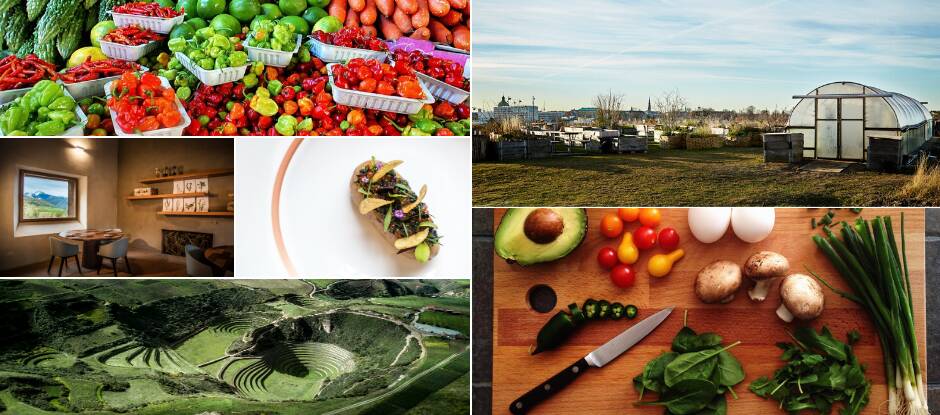At the same time as it celebrates the best of global gastronomy, 50 Best also recognises the significant role restaurants and bars can play in leading the movement towards a more sustainable way of living. With the help of Food Made Good Global, which has been auditing the Sustainable Restaurant and Bar Awards since 2013, 50 Best has identified some of the ways you can become a better friend to the planet by following the example of the world’s leading chefs. Discover how you can make your kitchen more sustainable – and follow the chefs who are leading the way – with nine simple tips
1. Make a vegetable the star of your dish – like Clare Smyth, Eelke Plasmeijer and Ray Adriansyah
An increasing trend in the world’s best restaurants is the idea that vegetables – and in many cases, ‘humble’ vegetables such as carrots and potatoes – can be the stars of a world-class dish. Many of Clare Smyth’s recipes at her award-winning London restaurant, Core by Clare Smyth, follow this deceptively simple principle. The chef even demonstrated how to make her signature dish, Lamb Carrot, on stage at #50BestTalks, so you can remake this British classic in your own home by watching the video.
Chefs Eelke Plasmeijer and Ray Adriansyah of Locavore in Bali, Indonesia, the winner of the Sustainable Restaurant Award at Asia’s 50 Best Restaurants 2019, use the same principle when creating their ‘Locavore’ menu, which exists alongside a vegetarian ‘Herbivore’ version. “We don't necessarily focus on a meat protein, but rather choose a product – such as a vegetable – and use a protein as the secondary ingredient to create the dish,” they explain. “For example, we cook a whole cabbage in bacon fat, or fry a bundle of oyster mushroom in beef lard.”
By reprogramming the way you think about the primary ingredients of a meal, you can reduce the amount of animal proteins in your recipes, thus making your food more sustainable – and, often, healthier too.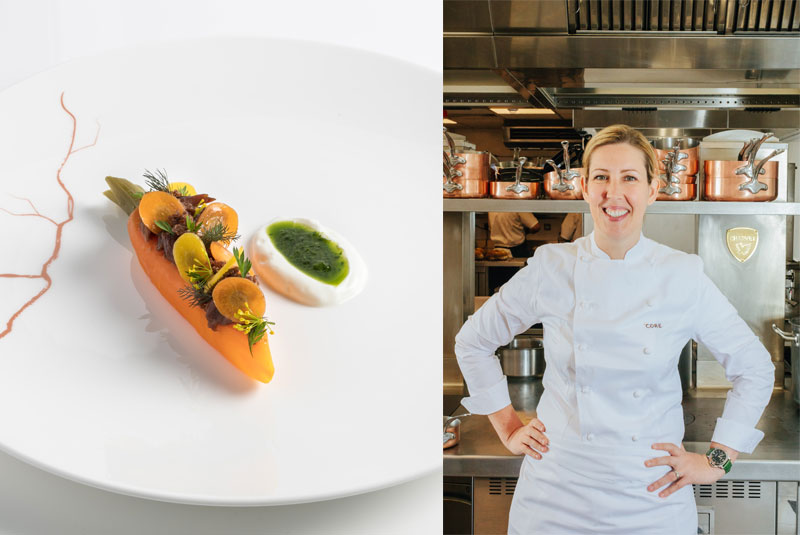
Clare Smyth's iconic lamb carrot and the chef herself
2. Use sustainable alternatives instead of plastic – like Bo Songvisava and Mauro Colagreco
Alternatives to plastic wrapping and packaging have become more widely available in recent years, with many replacements now available to buy on websites such as Amazon. This movement has been spearheaded by many of the world’s best restaurants, some of which go as far as making their own wax cloths to replace plastic wraps, such as Bo.Lan in Bangkok, Thailand. Bees wax wraps are considered a sustainable and reusable alternative to conventional plastic wrapping.
Another big cause of waste is found in plastic water bottles, bags and single-use containers. Restaurants around the world have been making efforts to reduce their use of plastic, with Mirazur recently becoming the first restaurant in the world to achieve a plastic free certification. Most cities now have stores where you can buy produce such as nuts, cereals and detergent by weight, bringing your own container to fill up. Zero Waste Near Me has a list of zero-waste shops in the UK, for example, and ZeroWasteDirectory does this for the USA.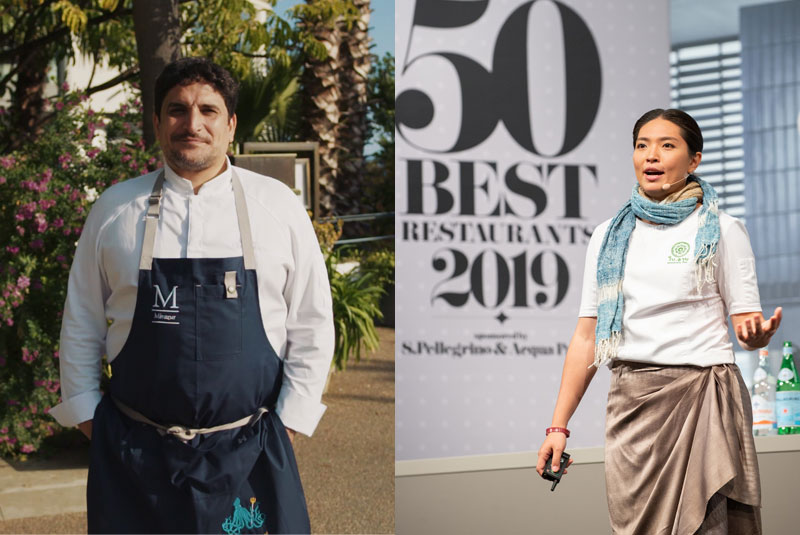
Mauro Colagreco and Bo Songvisava
3. Look out for your ingredients’ certifications – like Matt Orlando
Many of the world’s best restaurants are also increasing their focus on how ingredients, such as fish, are caught. Amass restaurant in Copenhagen, Denmark, led by chef Matt Orlando, serves only fish caught with seine and gill nets, or line caught. These are all methods that have less impact on the ocean floor and ensure fish only of a certain size are netted, while also reducing the amount of fuel needed to land the catch.
Checking how the fish you purchase is caught can help you avoid species collected through methods that may have negative environmental consequences. Many seafood products commonly sold in supermarkets now display certifications to promote this, such as the Marine Stewardship Council’s blue fish label in the UK, and you can also check websites such as Seafood Watch in the US.
As well as fish, many dry store goods now also carry certifications that endorse their sustainable origin and production methods, as well as quality. Look out for recognised certifications such as fair trade, organic or the Rainforest Alliance logo on the packaging when you’re buying anything from coffee and tea to bananas and beef.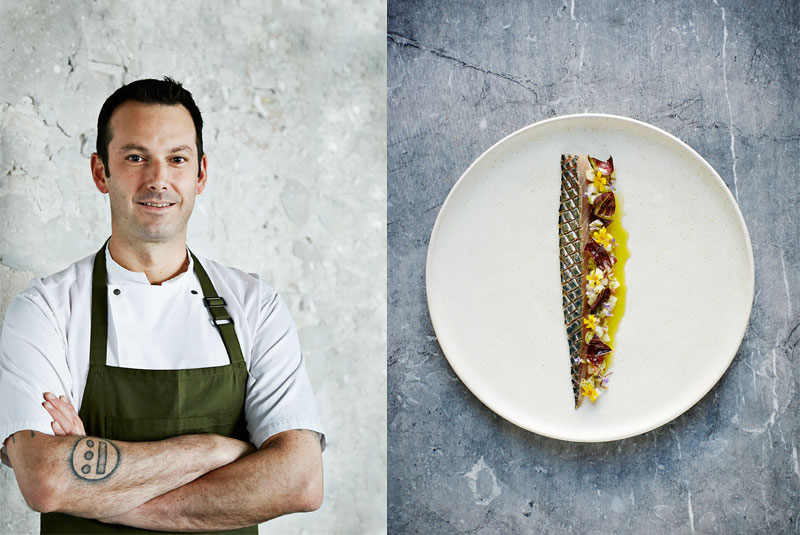
Matt Orlando and his sustainable mackerel dish
4. Explore less common varieties of vegetables and proteins – like Tetsuya Wakuda
Another strategy to reduce your impact on the planet is to look beyond the vegetables, meat and fish you’ve always eaten and try new, exciting varieties. Iconic Japanese chef Tetsuya Wakuda of Waku Ghin in Singapore strives to do this in his menus by including sources of protein that are less resource-intensive, such as seafood caught in the wild rather than farmed animals, which cause greater carbon dioxide emissions.
When creating a meat-based dish – such as his Ohmi wagyu roll with wasabi, citrus soy consommé, rice and snapper – Wakuda chooses heritage breeds to alleviate the strain on the most common cattle varieties. For the Ohmy wagyu roll, he uses beef from the Shiga region of Japan, which has been bred since the 17th century. By going beyond the most common products, you will not only vary your diet, but also do your part to encourage breeders worldwide to use less intensive farming methods.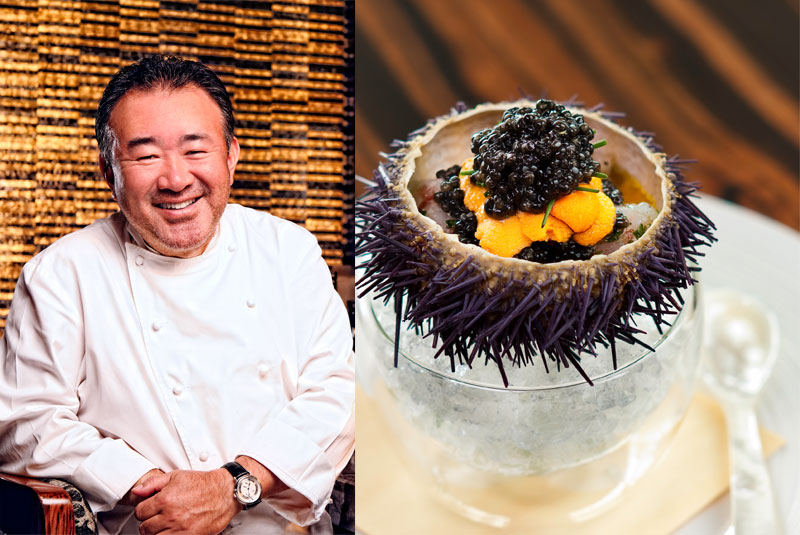
Testsuya Wakuda and uni with caviar
5. Consider starting a small garden, even on your windowsill – like Richard Ekkebus and Virgilio Martínez
If restaurant Amber, located inside The Landmark Mandarin Oriental Hotel in the centre of bustling Hong Kong, can create its own little garden to grow herbs and small vegetables, you can do it too – no matter where you are in the world. In the northern hemisphere, dill, celery, horseradish and rosemary are some of the easiest plants to grow; while basil, chives and onions will fare well in the southern hemisphere’s warmer climates. If you don’t have a garden, you can grow herbs like oregano, parsley and sage on your windowsill.
Growing your own food also helps reduce the amount of plastic and packaging that would have been needed to get those products to your kitchen. The team of restaurant Mil near Cuzco, Peru, led by chef Virgilio Martínez, learnt this when they decided to only use produce grown locally, which in their case is at over 3,000m of altitude in the heart of the Andes.
“By growing some of the food we use, we have become particularly aware of how much waste we reduce from the moment of the harvest,” says the Mil team. “We also try and use as much as we produce, and as much as we know our providers produce in their farmlands.”
A simple change such as starting your own mini-herb garden can help you realise the effort that goes into producing food, emphasise how much food is often wasted and encourage you to think of new and innovative ways to use whole ingredients in your cooking.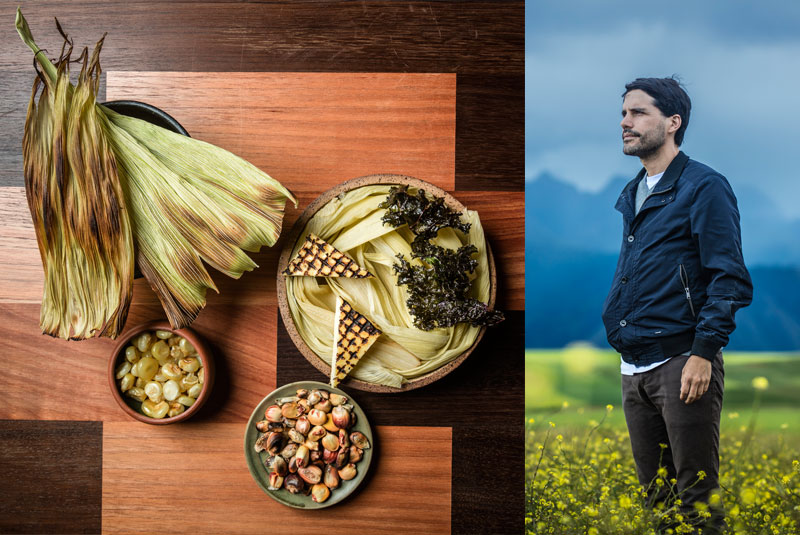
Mil's dish Diversity of corn and Virgilio Martínez
6. Respect the seasons – like Mauro Colagreco and Yoshihiro Narisawa
It is a widely acknowledged truth that fruit and vegetables taste better in season – but we are often too used to seeing these products available in supermarkets all year round to truly understand when they are in season. However, using seasonal ingredients is an uncompromisable tenet for many restaurants on The World’s 50 Best Restaurants list, from the current No.1 Mirazur in France – where chef Mauro Colagreco likes to highlight that there are “365 seasons” in a year – to Narisawa in Japan, one of the pioneers of the food sustainability movement.
Discovering which ingredients are in season at any time of the year, in any part of the world, is only a Google search away. In the UK, the BBC’s seasonality table lists almost every produce imaginable along with guidelines of when it will be at its best, and the U.S. Department of Agriculture’s seasonal produce guide is another useful resource if you’re on the other side of the pond. Seasonal food is also less likely to have travelled far, thus reducing carbon dioxide emissions.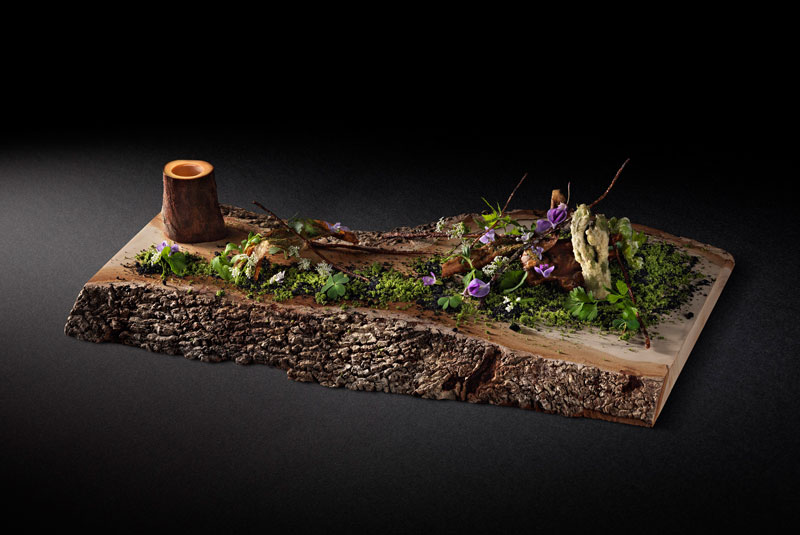
Narisawa's forest-inspired Satoyama dish
7. Buy locally – like Dan Hunter
Following on from the last tip, an important step anyone can take to create more sustainable meals is to buy locally. Look around you to discover the local farms or, if you live in a big city, head to countryside on a weekend to meet the producers behind the food you eat. You will be following the example of restaurants such as Brae in Birregurra, Australia, led by chef Dan Hunter.
“At Brae, we carefully select suppliers whose ethos is aligned with ours – those who practice organic or biodynamic farming and don't use pesticides, herbicides or hormones to grow their food,” says the Brae team. “These close relationships allow us to work together with farmers who adjust crops to meet our requirements.”
For the home cook, buying locally and from independent butchers, fishmongers and greengrocers means that you are able to find out more about an ingredient’s producer. Ask them questions, such as where the product is coming from, what the animal was fed and how it was slaughtered. This won’t only make them more likely to give you better ingredients, but it will also help you understand the growing process and feel confident in the produce you’re buying and eating.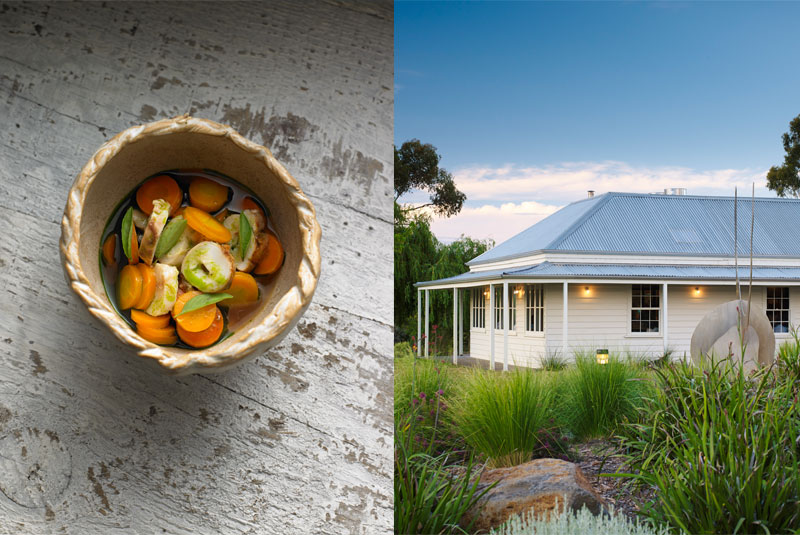
A dish of carrots, octopus and lovage, and Brae restaurant
8. Think about starting your own compost – like Matt Orlando
Composting is not only good for the environment, as it reduces the amount of waste you are putting out of your house, but your garden will also thank you, as you’ll be able to use the compost as nutrition for your plants. If you have the space, follow in Matt Orlando’s footsteps and start composting. “Whatever we can't use in cooking, along with brown cardboard, becomes compost for our garden and food for our worms,” says the Amass team.
You can start a composting bin – it’s better if it’s at least 1 cubic metre, as it will allow for good aeration – or simply choose a corner of your garden to be dedicated to composting, in which case shady spots are better. It is normally recommended to use between 25 and 50 per cent green materials (such as vegetable kitchen waste, weeds and grass), and complement with brown materials for the remainder, such as cardboard, shredded newspapers and dead leaves. Make sure you turn the heap or bin about once a month, and within six months, you will have your first compost.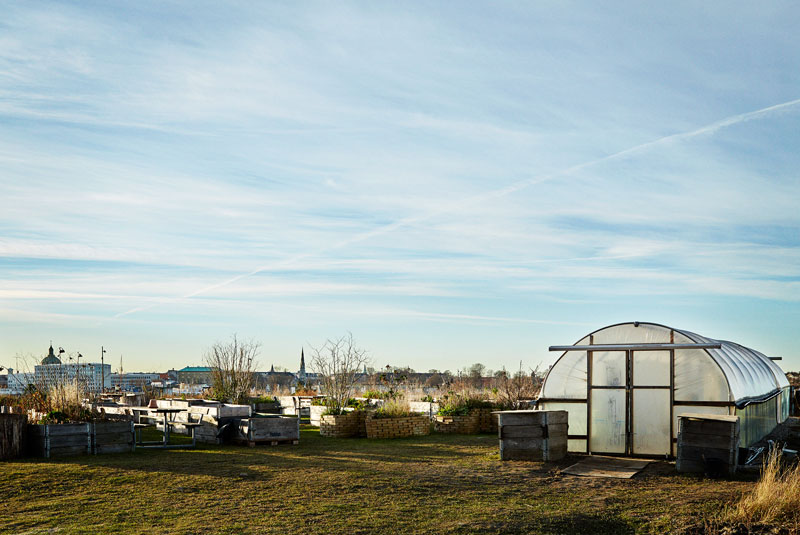
Amass' garden and greenhouse
9. See your waste as viable ingredients – like Massimo Bottura, Bo Songvisava and Virgilio Martínez
World-renowned chef Massimo Bottura famously started a revolution with the opening of his Refettorios around the world, where he uses food scraps to create nutritious meals for the neediest in the community. He even compiled the recipes that he and other famous chefs came up with at the Refettorios in a book, Bread is Gold, published in 2017.
At Mil in Peru, chef Virgilio Martínez employs alternative techniques to transform food waste into new products. “We use fermentation to create beverages and refreshments such as chicha, a traditional Andean fermented corn beverage, and we make infusions with herbs and items that are usually discarded, like legumes cases and husks,” says the Mil team. You can also consult René Redzepi’s The Noma Guide to Fermentation to gather invaluable insight into the fermentations you can do at home.
Pickling, preserving and fermentation are all useful techniques to reduce the amount of ingredients you are throwing away, but you can use food waste in other ways too. At Bo.Lan, Bo Songvisava uses lemon and citrus skins into natural cleaning products, and you can also employ used tea bags to degrease dishes.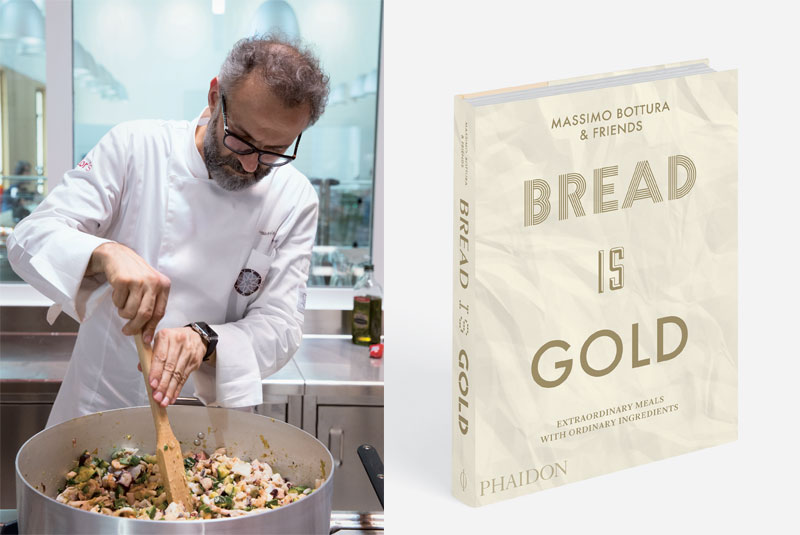
Massimo Bottura and his book
The winner of the Sustainable Restaurant Award for Asia’s 50 Best Restaurants 2020 will be announced at the awards ceremony on 24 March, and more awards will follow at Asia’s 50 Best Bars 2020 on 14 May and at The World’s 50 Best Restaurants 2020 on 2 June.
Stay tuned to our Facebook, Instagram and Twitter channels for the latest news and features, and subscribe to our YouTube channel for videos.
